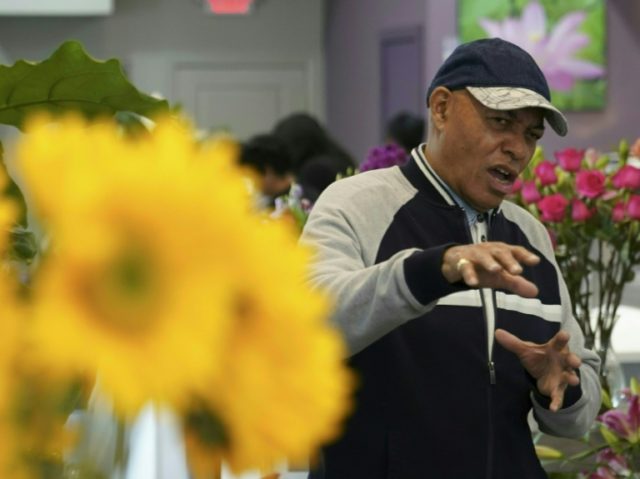Washington (AFP) – With “Soul Brother” written on the family’s flower shop and a shotgun at hand, Rick Lee stayed up through the night as riots engulfed parts of Washington after Martin Luther King Jr’s assassination.
Just hours after the icon of the civil rights movement was gunned down by a white supremacist in Memphis, Tennessee on April 4, 1968, the first riots broke out less than two miles (three kilometers) north of the White House.
As “soon as I heard that Martin Luther King had gotten shot and they started burning the city, then I ran up here to the flower shop” to “make sure that my mom was protected and the shop was protected,” Lee, now 75, recalled 50 years later.
It was unclear who was setting buildings on fire, but “we thought it was probably black folk because black folk were upset by Martin Luther King getting shot,” he told AFP at Lee’s Flower Shop on U Street, which is now run by his daughter.
“We put ‘Soul Brother’ on the window to let them know this was a black-owned establishment — if you gonna burn somebody down, don’t burn us down,” Lee said.
“We stayed here all night. We had a shotgun — I don’t know what good that would’ve done, but anyway, we were ready for anything that might’ve happened, OK, and… fortunately, we didn’t have any problems,” he said.
Lee said the “Soul Brother” inscription may have helped protect the shop, but he does not know for sure.
Others were not so lucky: The violence killed 13 people and caused millions of dollars in damage, with whole streets burned and shops looted before order was restored with the help of the National Guard.
– ‘Working for unity’ –
“That was a rough day, though, I mean, to see all the smoke” and “smell the burning and whatnot,” Lee said of the first of three days of unrest.
People were angry over King’s assassination, and over racial inequality plaguing the lives of African Americans.
“People were upset, because he was a champion… and folk knew that he had put his life on the line and, you know, was working for unity,” Lee said of the feeling in the neighborhood.
“He wasn’t working to have black folk mad at white folk or vice versa — he was working to unify folk, bring people together,” he said.
“Everybody loved him… except some extremists.”
U Street, which had a large number of African American-owned businesses, was not hit hard by the riots, but nearby stores owned by “Jewish folk, white folk… those were the ones that got burned out,” he said.
The ruined shops often did not reopen, and after the riots, drug dealers moved in because it was “kind of a blighted area.”
The construction of the Washington metro also took a toll, as it “tore up the whole street,” putting “a lot of people out of business.”
Now, many residents of the area — which used to be all black — are white, and its character has completely changed. The area is full of trendy new restaurants, bars and movie theaters.
But “it’s not a problem, actually, it’s a good thing, because the area’s been upgraded,” said Lee.
“I’ve never had anything against white folk… I just have a problem with people who are filled with hate, you know what I mean, that want to divide the country — that bothers me.”

COMMENTS
Please let us know if you're having issues with commenting.